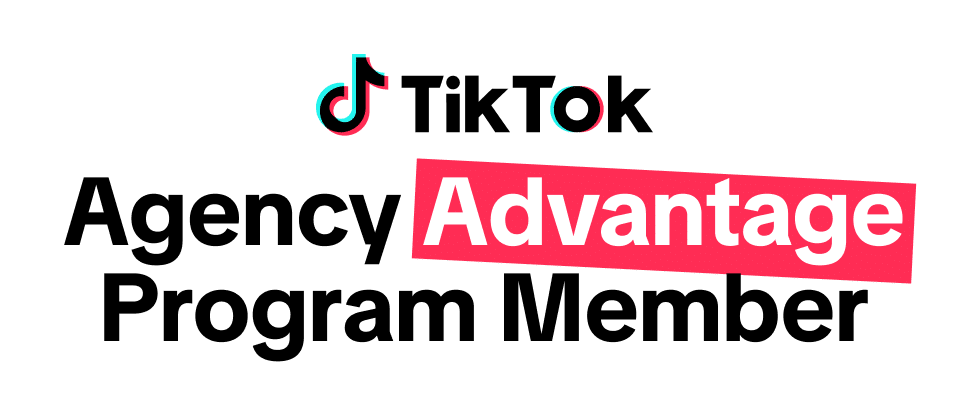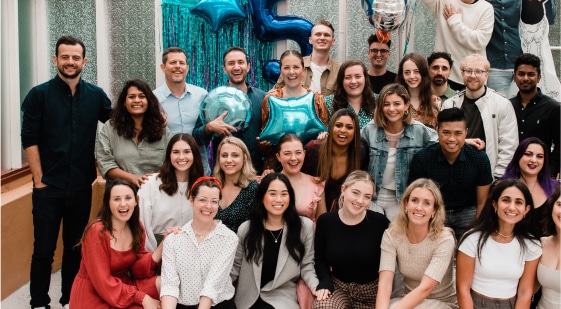Persuasion, Manipulation and Behavioural Psychology: How Consumer Choice is Shaped
Episode Description:
In marketing, there exists a fine line between influencing decisions and crossing into manipulation. The difference? One builds trust while the other erodes it.
Host James Lawrence chats with Dan Monheit, Chief CX Thinker at Thinkerbell and former CEO of creative behavioural science agency Hardhat, about applying behavioural science principles like default bias and anchoring to your marketing, related ethical considerations and how to draw the line between persuasion and manipulation.
Key Takeaways:
- Dan’s journey - starting Hardhat and his interest in behavioural science
- Introduction to behavioural science and it’s connection to marketing
- What are some common behavioural biases you see everyday?
- Default bias
- Framing
- Anchoring
- Loss aversion
- Effort bias
- Ethics in persuasion vs manipulation
- Navigating dark patterns
- How context impacts perception and shapes biases
- Essential behavioural science resources for marketers
Featuring:
About the Guest:
In October 2024, Hardhat was acquired by Thinkerbell, where Dan now serves as Chief CX Thinker, applying his expertise to elevate customer experiences through a blend of creativity and behavioural insights.
You can follow Dan on LinkedIn.
Transcript
James Lawrence: Welcome back to the Smarter Marketer Podcast. I'm here today with Dan Monheit. Dan, welcome to the pod.
Dan Monheit: Hey, thanks for having me. Longtime listener. First time caller.
James Lawrence: I love to hear that. So just by way of background, in 2005, Dan founded creative behavioural science agency HardHat. And up until three weeks ago, Dan successfully ran HardH]hat, worked with the who's who of brands, including Mattel, Bigger Dairy, the Victorian Government, Kogan, DocuSign, Afterpay, and many many more.
And in October 2024, Hardhat was successfully acquired by Thinkerbell, and Dan has just started the role of Chief CX Thinker at Thinkerbell. So Dan, congratulations and welcome to the pod.
Dan Monheit: Thank you. And thank you for also saying my new title because it still catches me off guard when people ask what I do.
James Lawrence: I just don't know how you, you can, you can do 20 years in, in one role and kind of move into a new office with new people and, and you, it must be very strange.
Dan Monheit: It is, um, it is a bit strange, but it's also kind of wonderful. Um, the thing about team are incredible and because basically the whole agency came over, we're in this amazing new environment with a whole bunch of people.
That we already know. So it's, um, it's, it's been a really wonderful first three weeks and everyone settled in well, clients settling in and, um, yeah, looking good.
James Lawrence: That's awesome. I, um, I'm going to just throw this little curve ball at you. So when Dan and I connected on LinkedIn and when you sold your LinkedIn, I really loved this, your LinkedIn post read, I'd love to tell 24 year old me that we will in fact make payroll 236 months in a row and that everything will work out pretty great.
James Lawrence: I think it's just an awesome quote. And I think. To get through one year in business is really hard to get through five is generally phenomenal, but to get to the kind of 20 and I kind of, I just like that perspective. I think it says a lot about what you've achieved and you should be very proud.
Dan Monheit: Thank you.
Dan Monheit: It's funny how many people have commented to me on that and, uh. Last week, pay went through and I don't know how, but it just did. I don't know if there were funds in the account or who had to approve what, but it was, it was a funny feeling.
James Lawrence: It must, um, it must be liberating in some ways not to have to worry about a bunch of stuff that you used to.
Dan Monheit: Yeah, so lots of new challenges, but it's, uh, it's quite nice to leave some old challenges to, uh, the very talented team here to take care of.
James Lawrence: Nice one, love it. Um. But how did you enter behavioral sciences in marketing and like what made you start hard hat all that all that time ago?
Dan Monheit: Sure. So, starting hard at back in 2005, I'd studied marketing and management. I had a job that I held for almost six months, which was horrendous. My longtime friend, Justin Cabani, had studied creative advertising, was having a tough time getting work as is the case for a lot of sort of.
Dan Monheit: Um, first you advertising people and we just decided we'd try and do something together. And at the time, neither of us could have named you as well. I certainly couldn't have named you a single advertising agency, and this was long before startup culture. Um, so as far as our parents knew, we, we weren't doing a startup, we were just unemployed.
Dan Monheit: And we, um, had grand ambitions to be doing big, interesting, creative work. I found out very quickly, nobody. Was interested in purchasing that from two 24 year olds with no experience, but this was very, very early days of the internet. So this is pre mobile, pre social. This was when YouTube didn't really exist.
Dan Monheit: Google was one of 10 search engines you might turn to. And people seemed interested in asking us to help with digital things. Uh, and this was an area where our youthful good looks and our complete lack of commercial experience didn't seem to be an issue for anybody. Um, so very quickly we took on a bunch of digital work, hired some people.
Dan Monheit: And before we knew it, we were sort of 25 with staff and an office and obligations and, and a business. And the long story short is we probably spent. 10, 12 years as a digital agency and all the things that a digital agency was over the years. So, you know, you've been in the game a while, so you might remember from websites and emails to flash games and mobile apps and social and content and web apps.
Dan Monheit: And then five or six years ago we said, Hey, we've got this opportunity to really. Um, swing back and try and be this modern creative agency. And we started building up that other side of the business. Um, and yeah, when, when we joined with think about we're probably half. Digital CXC work and half more creative work.
Dan Monheit: So that's the short agency story. Behavioral science is a thing that has matured along the same time as the agency has really as a field that people are interested in. Um, in uni, I studied marketing and management. I remember being in early economics classes, learning about these core principles of supply and demand.
Dan Monheit: And if apples are a dollar. X people want them, but if they become cheaper, more people want them. If they become more expensive, less people want them. And you're not ignoring that. Did you, were you in these same classes?
James Lawrence: Oh, look, it's, I, um, I mean, first of all, it's, it's kind of refreshing to be speaking to someone who was running a digital agency when Google wasn't the, uh, the search engine in the country.
James Lawrence: Um, I mean, I, , I did a law degree in the communications degree. So kind of, I think more to you, right? Like coming out of that, it was. We just found ourselves in digital marketing because that was the place where, yeah, like a 23 year old kid that didn't know what they were doing could get given approval to spend large budgets.
James Lawrence: Exactly.
Dan Monheit: Well, the large budgets maybe don't seem like large budgets now, but at the time, someone's giving you 500 bucks? What? Uh, so I'm at uni learning these core economic concepts. And at the same time I was working at the Nike factory store in Collingwood. Um, and so for your listeners who are not from Melbourne, not from Australia or too old or too young to know what Collingwood Smith street Collingwood looked like in the early two thousands, I think we would call it.
Dan Monheit: Pre gentrification would maybe be the coolest
James Lawrence: street in the world. Apparently,
Dan Monheit: yeah, yeah. So it was just a lot of druggies and a lot of factory outlet stores back then. But in working there, one of the things I realized, uh, apart from how many people happy to just steal stuff was people aren't behaving like they're telling me.
Dan Monheit: At university and I'm watching people come in and buy things because they're expensive. And I'm noticing that when I bring shoes from out the back, people seem to want them all because it seems that there's something special about them. And groups of kids would come in all wearing the same shoes. And so I already had this weird disconnect that the textbooks are interesting, but they don't seem to really match up with what I'm seeing in the real world.
Dan Monheit: And so I started exploring and reading and sort of diving down through, I think. Uh, Freakonomics was probably the first book that I read that sort of told me I was on the right track. Um, I think about actually reading Freakonomics as like the first time somebody gave me a Snoop Dogg album in the early nineties because their brother was a DJ.
Dan Monheit: I was like, this is what I was looking for. I didn't know what it was, but now I've got it. Um, and I just went deep down the rabbit hole and then the sort of. Um, as the agency was growing and the briefs were growing, I had this realization, hang on, every brief is a behavior change brief, whether the client says it on the brief or not, if they're paying us money, it's because they want a thing that's not happening to start to happen.
Dan Monheit: And why is there so little research in the field of marketing about. Behavior and why people do the things that they do and just little like five degrees to the left. If we just tilt our vision, there's 70 years worth of research about why people do the weird and wonderful things that they do. Maybe we should look at that.
Dan Monheit: And so that's sort of how the two have come together. Um, and that has. Had wonderful results for us and our clients across both the digital work and the creative comms work.
James Lawrence: So long answer
to a short question.
James Lawrence: Awesome. It's um, and like, I think you might have already done this, but in terms of explaining behavioral psychology in the context of marketing and I guess those, um, I guess the reason you're on the pod is that Dan presented at South by Southwest in the in the audience and it was just an awesome session and it was kind of talking a lot around behavioral psychology in marketing and I guess the ethics of right when is it awesome marketing and when is it a little bit potentially manipulative and I think most of us marketers let's lean, let's lean, our
job is
James Lawrence: manipulation, yeah, that's right, ethical manipulation to give people what they need Dan.
Dan Monheit: Yes, keep the world spinning. Yeah. So as far as what it is and how it works, so if you've never heard of behavioral economics or behavioral science, this is a field of study that kicked off in the 1950s and in the 70 years since has built up. oceans of evidence based on thousands and thousands of peer reviewed studies, helping us understand why people do the things that they do.
Dan Monheit: And at the core of behavioral science is, I wouldn't even say an acceptance. I would say a two armed bear hug embrace of the idea that we are nowhere near the rational decision makers that we'd like to think we are. And that in reality, the vast majority of our decisions, and we make thousands and thousands of decisions a day, the vast majority of them are based on emotion, based on biases, based on the context within which we make those decisions.
Dan Monheit: And one of the key findings of behavioral science is this idea of heuristics, which are common, consistent, predictable quirks that we are all at times subject to that often result in us doing things that make no objective sense at all. So if you imagine all of the weird and wonderful things we do as humans, we stand outside full restaurants.
Dan Monheit: While empty restaurants across the street wait for us, we go and smash ourselves at a gym class at six a. m. And then reward ourselves for doing that with a muffin and a milkshake at 11 a. m. Um, we, you know, uh, save for. Home deposits and then reward ourselves for saving on home deposits by buying new sneakers.
Dan Monheit: We do all these weird and crazy things and there are biases or heuristics that help us understand all of them. And once you know what they are, you can start building products and brands and campaigns and services and businesses around them. And I almost think about them as cheat codes for the game of sales.
James Lawrence: That's a great, great definition. Um. I was kind of keen to go through some of the ones we talked that you talked about at South by Southwest. So, um, there was one which was default bias. Maybe if we could just explain that and maybe share some examples of.
Dan Monheit: Yeah, let's get into it. So, I mean, in the world of behavioral science, there are 200 to 300 different biases that have been observed and recorded.
Dan Monheit: So we can do, we can do hours of this, but let's, um, let's, let's get into a couple of the more common ones. And once you start seeing these in your life, you can't. Um, see them. You just realize they're everywhere. So default bias is the idea that when given a default course of action, we will take it a disproportionately large amount of the time.
Dan Monheit: And often in life we are given options and our brains. Don't love doing the work to objectively work out which of these is the best option. A Danny Kahneman, founding father of behavioral sciences, thinking for humans is like swimming for cats. We can, we would just prefer not to. So defaults are really powerful.
Dan Monheit: When you give somebody a default course of action, um, there's a good chance they're going to take it. So, um, before. The one job that I had corporate job and before the Nike job, I spent four years working at McDonald's. And one of the things you learn working at McDonald's is when somebody comes and orders a big Mac meal, the only correct response is, is that a large, and chances are people will say yes, but you don't ask what size you say is that a large and people will tend to say yes, because the alternative to saying yes is to actually.
Dan Monheit: Engage your brain and think about how hungry am I, how thirsty am I, what is the price difference between the small and the medium and large, you know, when did I last eat, when will I next eat, I'll just, I'll just take a large because that's easy and you know, the guy working here with the visor and the clip on tie has suggested a large and he clearly knows what's going on.
Dan Monheit: So that's probably the right thing to do.
James Lawrence: You can imagine the difference if it was, if the question was flipped, right. And it was like, is that a small? Yeah, people would say yes.
Dan Monheit: Yeah, exactly. Um, so like this is a thing that I use in my daily life when I'm trying to get meetings with somebody. You know, if you say to somebody, Hey, I'd love to catch up with you next week.
Dan Monheit: What are some times that are available? You think about the work that you have just created for them. If you say to somebody, Hey, I'd love to catch up with you next week. I could do Wednesday at three. Does that work for you? You know, it's easy for them and you're more likely to get a yes.
Dan Monheit: And
we see this, um, and we see this digital interfaces are very easy, um, reference grounds for this sort of stuff.
So if you think about purchasing a flight, you know, and there's different options with baggage, without baggage, cancelable, not cancelable, flexible, not flexible, like they will give you a default. And we just, we, we tend to take them. So this is one of many, many tools that a marketer can have in their toolkit to try and nudge sales in a particular direction.
James Lawrence: Really interesting. I was kind of, when you were talking, I can't imagine being, you know, in your friend or family group, just the way that you're kind of cajoling and manipulating. And you know, one of the, one of the hazards, tomorrow at 3. 00 PM.
Dan Monheit: Yeah, one of the, um, the, the sales techniques I use on my kids a lot is something called, there's something called an alternate close where, you know, you give somebody two different options to buy something, both of which result in them buying it. So, yeah, if you take this today, we can either put it on credit card or what we can do is put it on after pay or whatever, which one would be better for you.
Dan Monheit: And now I'm deciding between the two payment options. I'm not deciding whether I should buy this or not. Do
James Lawrence: you want to do your teeth first or do you want to do X first before?
Dan Monheit: So exactly. So I will give my kids the option of like, do you want to have a shower and then do your teeth or do you want to do your teeth and then have a shower and their brains are thinking about which order they want to do it in and the debates off.
Dan Monheit: Um, unfortunately for me, just knowing that these things exist, though, do not make you immune from them. And I find myself often doing stupid things because I've been tricked into them. And maybe I get. Retrospective understanding of what I've just done, but it often doesn't stop me in the moment,
James Lawrence: isn't it?
James Lawrence: Brilliant. I mean, you must live your life. Just looking at all these, the way these things are applying in real world, I did, um, because it's not, this is not the core of my space, right? So I , did some research and a good use of default bias. So that was really interesting. One was around organ donation, , presumption used to be that you, you didn't check, check it and they basically changed it.
James Lawrence: So it was checked and you had to opt out of it and it became just revolutionary in terms of the uptake.
Dan Monheit: Absolutely. I mean, there are countries in, in, uh, Europe that had, uh, organ donation rates 98, 99 plus, and then you would have similar countries in other parts of the Western world like Australia and America and Canada, wherever there were in the teens.
James Lawrence: And you
Dan Monheit: look at it and you say, what is, what is going on here? What is wrong with people in, in these countries? Why are they so selfish? And a hundred percent to your point. The option was the default in Australia. When you get a driver's license that you defaulted out, unless you say I'm in, in many other countries, you're defaulted in, unless you say I'm out.
James Lawrence: So it's fascinating, isn't it? Um, the next one that you kind of talked about, um, at South by Southwest was framing really interesting device.
Dan Monheit: Yeah. So this is the idea that the context is far more important than the content and we can perceive the exact same thing in different ways when it's presented in a different frame.
Dan Monheit: And so the idea of undertaking an operation. With a 95 percent success rate feels better than an operation where one in 20 people die, but it's the same thing. It's a different framing. And when we think about how, um, everything from dairy products advertised with their, are they 3 percent fat or are they 97 percent fat free?
Dan Monheit: Um, so, you know, we see this with, with, um, bug spray and all sorts of things like that. Um, the same content presented differently can completely change the way we react to it.
James Lawrence: Yeah, it's fascinating, isn't it? Um, yeah, it does. It does, like, just on the face of it, the idea of a 95 percent success rate. I'll take that.
James Lawrence: Yeah, yeah. A 1 in 20 chance of dying, probably a bit less likely to want to engage.
Dan Monheit: A lot of these biases feed into each other.
Dan Monheit: So there's something else called anchoring. And anchoring is how we tend to put too much emphasis. On the first piece of information we get when we are in an unfamiliar setting. So you want to go and buy a barbecue. You don't know how much a barbecue should cost. The first barbecue you see is 6, 000. All of a sudden the 3, 000 barbecue that you now see doesn't seem crazy expensive.
Dan Monheit: Whereas if the first barbecue you'd seen was 300, the 3, 000 one seems completely crazy. So it's, it's sort of an example of framing where, how a 3, 000 barbecue can feel cheap. Or expensive, depending on what it's sitting next to,
James Lawrence: and that's one which, because that is a device, which I think I've come across before professionally.
James Lawrence: Right? And then when you're talking before about these devices being used on you and you, you still can't escape the effect. And I find that one just to be so true. You kind of walk into a car. Dealership showroom and they put out all the cars with all the specs, whatever else huge price tags on them.
James Lawrence: Okay, that's, that's what this thing costs. And then when you actually start to start to speak to the dealer and we can give you this discount and that discount and suddenly the ridiculous price you otherwise would never have considered becomes quite, you know, that's actually a bit of a bargain or walking into a retail store where there's a black t shirt for 300 bucks.
James Lawrence: And then, you know, then the, then the, the belt that's two 80 doesn't look so bad, you know,
Dan Monheit: With this one? I also think about, um, you know, if something breaks in your house, let's say your dishwasher breaks and the person comes to repair it and I have a quick look and I say, look,, I think this is probably going to be around 500 to fix, but let me like have a proper look.
Dan Monheit: And I'll come back to you. And instead what happens is you go away, you come back and I say, Hey, look, I've had a look at it and it's actually not going to be 500. All of these things are wrong with it. And it's probably going to be more like 800. And you're like, Oh man, 800 bucks. That sucks. I can't afford this right now.
Dan Monheit: Situation two is person comes in to look at your dishwasher. They say, Hey, This looks pretty bad. You're probably going to need a new one. It's probably going to set you back two or 3, 000, but let me have a look and see if there's anything I can do. Come back half an hour later. They're like, Hey, you actually don't need a new one.
Dan Monheit: I found the issue. It's going to be a hundred bucks to fix. How do you feel about that? And you're like, yes, 800 to fix this thing. That is brilliant. And so again, it's the exact same. Outcome for the exact same price. The only thing that changed is the framing that
James Lawrence: sits within. And how are you working with clients in this type of not necessarily framing specifically, but maybe, you know, default biases or framing like just practically, like, how are you working with clients to to use those devices within campaigns and creative and product design and whatever it might be?
Dan Monheit: Sure. So let me give you a sort of really like high end example, and then a really low end example. So really high end example is a client has a new product. And one of the first things I'll always wonder is,, is this an aspirin product or is this a multivitamin product?
Dan Monheit: So an aspirin product is something that takes pain away, gets you back to normal. A multivitamin product is a product that says, Hey, you're at normal and I'm going to take you to some extra level. The same product can be both, but the way you frame it and the way you talk about it. He's going to be completely different.
Dan Monheit: And what we know more often than not is people are far more willing to pay for an aspirin or something to take pain away than they are to pay for something that will take them to an elevated state. Um, similarly, if a client, you know, a snack food client comes up with a new snack bar, the same snack bar could be the tastiest thing in the health aisle or the healthiest thing in the confectionery aisle.
Dan Monheit: What frame do we want to put around this? Yeah. And so you start shaping everything from packaging and naming and messaging and advertising accordingly. Like what is this thing going to be for at a really, at a really high level. And you know, when you go down the confectionery aisle, there's no real objective reason why.
Dan Monheit: You know, this chocolate is for taking a break and this chocolate is for when you're hungry. And this chocolate is for saying thank you. And this chocolate is when you just need a little pick me up before a meal. The only reason that that is true is because the ads told us because somebody decided that's what this thing is going to be for.
Dan Monheit: So that's how we can use it at a really sort of high end level at a much lower level. If we think about clients, we have. In utility spaces. So people saying they're selling phone plans or energy products, and you are looking for ways to bring customers on board or to get them to choose one particular plan over another plan.
Dan Monheit: You can. So, you know, the order that you put the pricing in the one that you highlight, the one that you show us popular, the one that you show us only available today are all going to impact the way in which people select them. And as long as it's true, and as long as it's ethical, we would not be doing our jobs properly.
Dan Monheit: If we didn't look for ways to nudge people in the correct direction.
James Lawrence: Yeah, it's fascinating. So, so interesting. Um, another one that you talked about. Um, at the conferences loss aversion.
Dan Monheit: Yeah. So this, this one is the idea that we are twice as motivated to avoid losses as we are to get gains. It's a bit like actually like the aspirin multivitamin thing.
Dan Monheit: So losses feel really bad for us emotionally. And the studies show that they feel about twice as bad as the equivalent gains. So if you. 10 in the street, you would need to find 20 in an old pair of jeans to come out emotionally, even so getting people to feel like they already own something can make them more willing to buy it or make it feel more painful.
Dan Monheit: If they decide. To walk away from it, which is why things like test drives for cars are really important, which is why giving people really easy ways to start using new software is really important. Cause as soon as it feels like it's mine and it starts rusting on the pain of losing, it starts to overwhelm the joy of getting something else.
James Lawrence: Yeah, and as you're saying it, so like that turn of phrase, don't lose your X, don't lose your discount or don't lose your whatever it might be, that personalization of yours. I've never really thought about too much.
Dan Monheit: Yeah, they're really trying to make you feel like this is a thing that is going to be gone from your life forever if you don't activate it.
Dan Monheit: It's fascinating. It's valuable.
James Lawrence: It's fascinating stuff. And I think, and then the last of the actual, I guess, tools or devices, because as you said, there's hundreds of them, but, but one that I thought was really interesting, um, at the, at the, the conference was effort bias. We could just talk a little bit about effort bias and the application of that.
Dan Monheit: For sure. Uh, this is, this is one of my favorites. Um, and it is the idea that as humans, you know, many, many times a day we are. Required to decide the value of something. We're not very good at doing that in any objective way. So we have little shortcuts and one of the shortcuts we use is how much effort do we think went into making this thing?
Dan Monheit: And the research says that the more effort we perceive has gone in, the more value we believe comes
Dan Monheit: out.
Dan Monheit: Um, so there's been lots of studies done on this. Um, the. Sort of seminal one. I think it was from a researcher called SACdiva in 2009. It brought participants in, um, split them randomly into two groups, gave each group a set of poems.
Dan Monheit: Actually, maybe it was 2005. It was pre, anyway, they reviewed these poems and then were asked to rate and review these poems based on the quality of the poem, their overall enjoyment reading the poem, and how much money they thought a poetry magazine should pay to publish that poem. Um, I'll get the numbers wrong, but basically one group was told that the palms had taken something like five hours to write and another group had been told that he had been told that the exact same poems had taken 15 hours to write.
Dan Monheit: And of course
Dan Monheit: the group that had been told they had taken longer to write consistently rated them as more enjoyable of higher quality of worth more money to a policy magazine. And the same findings have turned up with amateurs and self declared experts with. Paintings with pottery with wine. It doesn't seem to matter if it has gone in, we think more value comes out.
James Lawrence: And you say that, don't you, in kind of a luxury space, whether it's, you know, handmade something, something wine or some kind of widget that, you know, a watch that's been, you know, Painstakingly prepared by a Swiss watchmaker versus coming out of on a factory belt in China. We have a perceived feeling that there's more value there, right?
Dan Monheit: Absolutely. We want to, we want to buy the artisanal jam. You know, we want to go to those local farmer's markets and see the person who actually made this thing. And if we think about restaurant design, if you were going to, Open a fancy restaurant in any city in the world, 20 or 30 years ago, you know, the kitchen would be out the back and completely obscured from view, you know, just with like a little past, like in prison where they just slide the food backwards and forwards.
Dan Monheit: Cause I guess the belief at the time was people aren't here to see the mess and the chaos of kitchen. So it's going to be out the back. You go to a great restaurant in any city in the world now. And where's the kitchen in the middle of the restaurant and where are the best seats sitting around the kitchen because we want to see the craft.
Dan Monheit: We want to see the people working and people write the food better. They write their experience as more enjoyable if they're watching the craft being performed in front of them.
James Lawrence: And you can just see the marketing application about right across a whole range of different. Products and service offerings, right?
James Lawrence: It doesn't just have to be products. It can be service, right? And who's the person behind it? And
Dan Monheit: absolutely. And my steer for clients on this one is always, you know, this isn't about adding complexity. Um, this is about. Surfacing and celebrating the complexity that already exists. Like if you're in business and you have customers, something interesting is happening behind the scenes.
Dan Monheit: And it might be from your people. It might be from your processes. It might be from the providence of where your products come from. Um, you know, it might be from the pedigree of the business and the history of the business, but someone has put in more effort than anybody would ever expect them to.
Dan Monheit: Otherwise you wouldn't be here. So maybe what we should do is think about interesting ways to showcase that. And it doesn't always have to be as straight as we've discussed. I mean, the, uh, John West, the famous ads of the fishermen fighting with the bear to get the best tuna. Like that is a beautiful encapsulation of the effort bias.
Dan Monheit: I mean, actually showing a fisherman sort through fish markets, like would not be very compelling viewing, but. You know, say a bar fight between a fisherman and a bear is quite good and it tells the same story in a much, in a much more interesting way.
James Lawrence: Yeah, totally. How do you, um, because we've just gone through kind of six devices, I guess, or tools or whatever you might call them, you kind of mentioned there's hundreds of them, right?
James Lawrence: How do you, when you're, when you're given a job, right? It's like, hey, this is a SAS business and we're trying to increase X or this is an energy. Provider. We're trying to do. Why? How are you determining which of these tools you're using? Like, is that a checklist where we go through every single one or is it one where you got not bang on?
James Lawrence: This is the one device we need to go hard in on. Or we're going to use. Okay, how do you kind of approach that?
Dan Monheit: Yeah, so to answer, I just got to add a few little disclaimers and context. Um, so one is. Behavioral science is a pretty messy field still. It's still relatively new. And I don't know if we'll ever have, but we certainly today do not have a periodic table of neatly ordered biases.
Dan Monheit: Um, and even just in our conversation, you can see often these sort of bump into each other.
Dan Monheit: Yeah, totally. Anchoring is a bias and framing is a bias. And is there a defined hierarchy between these? We don't, we don't really know. So as a starting point, it's messy.
Dan Monheit: The other thing is when behavioral science is deliberately used in marketing, oftentimes it is referred to as nudge theory. So it is not massive tectonic change theory. It is nudge theory. And so we're around the edges here.
Dan Monheit: If you fundamentally hate spinach, there's no bias that I can use really, you know, to get you to try it. So we are around the edges and we're testing and we're learning and we're experimenting all the time. There is no bias that works on all people in all contexts all the time. However. In my own programming, what I've come to realize is there are maybe four key types of problems that every brief is.
Dan Monheit: Seeking to address. So it might be an awareness issue that we need more people to know about our product. It might be a value perception issue that we want people to be willing to pay more for this thing, the competitors. Uh, it might be a conversion issue that people know us and they like us, but we're just losing them at that last click.
Dan Monheit: Or it might be a product portfolio design issue where we're trying to work out how our products should sit. with each other and within the category. And so within each of those four, I've got my little laundry list of from experience, from my research, from my intuition. These are the handful of biases that are most fruitful when we're looking at a product portfolio question versus a conversion rate question.
Dan Monheit: It's pretty open.
James Lawrence: Yeah, that's a great response. I think for my own curiosity is that like, how does, , how does all this stuff fit together? You know,
Dan Monheit: yeah, thank you. It's, it is still, I mean, I think for me, one of the most exciting things about this space is it is still evolving so much and more and more big brains are realizing this is interesting and more and more big brains from, it's always had academic big brains in it.
Dan Monheit: Unloving is how many other marketing and comms and business people are saying, Hey, we can go and do a whole bunch of research. Yeah. Oh, we can look at this Huge, you know, treasure trove of research that already exists, and maybe we can work out how to apply some of that outside of academic situations and into the real world.
James Lawrence: It's, it is interesting, so much of, because I think we've both come from a really, I hadn't realized before the conversation, we've both come from such a similar background in kind of early, Stage digital and
Dan Monheit: I
James Lawrence: remember reading the Robert Chiodini book influence in, it would have been mid 2000s and it was nothing.
James Lawrence: I think he, there was some ABC show at the time, some comedy show and he was on it, I think. And it was, I found it just fascinating. Yeah. And I read the book and, and it was fascinating book, right. And obviously it does relate to business and it relates to say sales and marketing obviously, but then.
James Lawrence: He just like probably 10 years after that just popped up as this kind of massive guy in digital marketing from a CRO viewpoint and yes, it's so much of it. This does feel like CRO related, right? And as you said, I can't make people eat spinach and like spinach if they don't want to eat it, but when you're talking about, you know, kind of, as you said, framing and nudging and evolving and changing little bits and pieces that move people towards a business outcome that you want.
James Lawrence: Um, yeah. You can see how, how the subject matter applies itself.
Dan Monheit: Yeah, I can't make you eat spinach if you don't like it. But if you do like it, I reckon I can get you to buy my wine, not the private label one. If that's the price that I've been given.
James Lawrence: Yeah, yeah, love it. In terms of the discussion at South by Southwest, it was, it was, it was a great topic.
James Lawrence: It was brilliant marketing or dark arts. Are you convincing or conning your customers? Um, and it was kind of you on a panel with a lady who was you from, um. Admirable and probably looking at like regulation and kind of what's falling within consumer law or misleading deceptive conduct.
James Lawrence: But what is that, like, how, how do you define the difference between persuasion and manipulation in marketing? You've got kids and, you know, seem like a good guy. Like what's the, what's the line, right? Don't be
Dan Monheit: deceived. Don't be deceived. My job is to look like a good guy.
James Lawrence: I just reckon you there going, like after this, you're going to work out how you can make people buy spinach that don't eat it.
Dan Monheit: Um, so, um, there's a few ways to tackle this. Uh, so Sala, who she, she's great. She spent a lot of time doing this. Um, she talks a lot about dark patterns. So, so maybe the, the macro answer to your question is there are things that are just illegal. And they're illegal as a marketer, whether you are doing them online or on packaging or in store or whatever, you just can't lie.
Dan Monheit: You can't be outwardly deceptive. You can't do lots and lots of things like that. There's also lots of things that are very much in. You can say your product is delicious and you can say that you use all natural ingredients if that's what you do. So the edges are kind of fine where things get tricky is in the middle.
Dan Monheit: And the term manipulation gets thrown around a lot and it is, it feels like he has this inherently negative. But if manipulation is getting people to take a course of action that they weren't necessarily planning to do, that's our job, like that is literally what we all do. You know, we get people to buy the thing.
Dan Monheit: They maybe didn't realize that they wanted to buy. And so if we don't use all of our best tools and all of our best endeavors to do that, then we are not doing the job that our clients. Are engaging us today.
James Lawrence: Yeah, I could see your comment before. It's, um, you know, if I want to make someone buy more of my spinach and someone else's, so it's, you know, you're representing yogurt brand a and someone else is selling yogurt brand B.
James Lawrence: Do you want to be the 20 percent fat 20 percent fat or do you want to be the 80 percent fat free? Right?
Dan Monheit: Yeah,
James Lawrence: I think that's manipulating to increase your product over the other. You're not lying. You're not misleading. You're using, yeah,
Dan Monheit: that's
James Lawrence: right.
Dan Monheit: Yeah. And the other thing to consider just as we get the baseline.
Dan Monheit: So the baseline is brands and businesses and marketers and agencies exist to change behavior. If we're not changing behavior, we're not doing our jobs. So we should try and do as good a job of it as we can. The other baseline I think is really important is you can't not design. The choice. So if you are getting people to choose from five different yogurts, the order that you put them in, how you describe them, like impacts the one that people choose.
Dan Monheit: So you can't opt out of this. If you are going to be giving people environments to make choices, you can't not manipulate the way they choose. So your choice is, do I do this ignorantly or do I do this mindfully and knowingly? So that's sort of the baseline job is to change behavior. So then the question is, well, what happens with this?
Dan Monheit: middle ground. And one of the things Salah spoke about a lot was these things called dark patterns. And these are things that are not necessarily illegal, might become illegal, but currently not illegal, but very much down the dark, dark, dark gray end of things that you can do. And so these are, you know, deceptive design tactics.
Dan Monheit: Specifically set up to manipulate users into doing things that are probably not in their own best interest, but are in the best interest of the business. And so these are things like, um, signing people up to free trials without really mentioning all that much that as soon as the free trial is over, we are billing a credit card for everyone a day.
Dan Monheit: Or signing people up to things that are very, very hard to unsubscribe from where, you know, you've signed up online, but you unsubscribe, you have to call them in a European time zone on a Monday or a Tuesday from Australia and have your passport, like crazy things like that. Or, um, Confirm shaming is one that she talked about where yes, you can unsubscribe, but to unsubscribe from this, whatever meal planning service, you have to click a button that says, yes, unsubscribe, because I don't care about my health, my health.
Dan Monheit: And I want to stay as a fat slob until the day that I die. Like, yes, unsubscribe. So all of these things that are like shady and not nice and icky, um, but I technically often still legal. Is where a lot of these gray, gray lines are.
James Lawrence: And that's so interesting, isn't it? Because I think for me, like the first example there, and I felt this in the room.
James Lawrence: If you sign up for a 7 day free, free trial, and you put your credit card details in, and it's made clear at the time of doing so, that if you don't cancel within that window of time, you will be charged. On the 8th day, and that will continue to happen. I just do not see the ethical problem with that. Um, I think there's a balance, right?
James Lawrence: When you're dealing with SAS businesses or, uh, connected TV type services, where it becomes very difficult to actually find the screen to cancel. Obviously, if you're burying something to a point where it can't be found, and to me, I think that consumer law would deal with that. I think with misleading and deceptive conduct, I would have thought.
James Lawrence: Yeah. The second example, once again, I think the idea that you, I think from a UX perspective, you'd want to be able to cancel something using the same kind of mechanism that you signed up online to the phone center. But I think as long as the phone center is in, you know, Australian time zone and you can access it for the cost of a local call.
James Lawrence: I mean, I had one, but it was the Boston Globe I signed up to and it was literally impossible to cancel. It was unbelievable. Like I think, and that probably be typical for an overseas subscription, but literally could not. Could not call and cancel and it was such an inexpensive amount of money. It's like, I'm not going to sit on line.
James Lawrence: I'm not going to sit on the phone for three hours. I know 9, 9 thing. And then the third one, I think. If a brand wants to be put itself in that context, I think the brand's probably going to come off worse. Right. If they're sharing, like, yeah, but I think waiting a cancellation with, you know, do I actually want to lose some kind of benefit?
James Lawrence: I think probably ethically. Okay. But whether you're going to call someone a fat slob seems a bit,
Dan Monheit: Oh, yeah. Well, I didn't call it. They just called themselves that by clicking the button. Yeah. Yeah. On the second one. Yeah. I wonder if there is some, Hmm. Ratio between ease of sign up and ease of unsubscribe that we're comfortable with.
Dan Monheit: And then at some point when it's super easy to sign up and super impossible to unsubscribe, it feels off. And I wonder if it's, it's gotta be one to one or if it can be twice as hard to unsubscribe as it was to sign up. We're like, well, that's fair enough. Yeah. Or, you know, if, if there is a comfort level that.
Dan Monheit: We would have with that.
James Lawrence: I think it does the Internet has meant that we as individuals have so much more power to make decisions about brands, reviews, reputation, whatever it might be. And I think there's also a blowback, right? If we're using these devices in such an obvious and kind of I'm a like way, it's not really backing up my point, but in the room at South by Southwest, there's a guy who kind of we're talking about that the whole 7 day trial thing and he was talking about a particular software.
James Lawrence: Provider who actually emails the day before saying, are you sure you want to be built? And, and I thought, wow, that's actually like a massive tick to that brand. And then the whole room is hearing that this brand did such a great job, but being so open and transparent, um, the fact I've forgotten that kind of maybe disperse a little bit.
James Lawrence: But I think these things also have to kind of, uh, meld with the type of brand and business you want to be, right?
Dan Monheit: Yeah. And I mean, I think one of the things the internet has done for, for business, for dating, for lots of things is led people to believe there's just so much abundance out there that I can just burn the next 50 people.
Dan Monheit: It doesn't matter because there's another one bought. Um, every minute and like a lot of marketing decisions, you're choosing between a short term benefit and a long term benefit. You can lie on your packaging and you're going to sell more saying it was fresh when it wasn't, but at some point people are going to work it out and they're going to stop buying.
Dan Monheit: And so I think, yeah, one of the things. It's harder to get that short term sale cause there's so much competition, but if you burn it, there's just this sense that, well, we'll just dial up our ad spend and we'll just get some more people in who, who, who won't unsubscribe before the seven day trial is over.
Dan Monheit: So it's a tricky balancing act.
James Lawrence: Yeah, it really is. Isn't it? Any kind of conversations around brand and reputation and. The impact of bottom line on the long term of that. Right. Any, any other kind of dark patterns or kind of gray areas, which you find, like, maybe you find challenging yourself or you find really difficult for your clients when they're making decisions in this space.
Dan Monheit: Yeah, I mean, one of the things that's tricky. Is the importance of context. And I think this actually came up in the room, how sometimes the same mechanism can be perceived in a completely different way because of the context that it's in, which I guess, you know, wearing shorts, the poor shorts to a wedding, they're the same shorts, the context that makes it feel okay or not.
Dan Monheit: Okay. And I think the example we talked about on the day and I, like I make no judgments, we're living in Australia. There are lots of things that are legal that I don't personally enjoy. Gambling is one of them. And so if we talk about. And we spoke about defaults earlier. So if we take that as an example and we say, okay, um, you go to a charity website and your intention is to make a 50 donation.
Dan Monheit: And when you go into the donate page, you type in the 50 and then the default setting is make this a monthly subscription, make this a monthly donation. And you have to untick it to say, no, thanks. Just make it a one off. We might say, well, maybe, maybe it's slightly cheeky or slightly presumptuous, but by and I'm pretty good with that.
Dan Monheit: If we take that exact same interface and apply it to an online gambling website. Where your intention is to go and put 50 into your account once. And the default setting is add 50 to my account every month. And you have to untick that and say, no, thanks. Please just make this a one time contribution. For me, it has, it has a different feel.
Dan Monheit: It has an IKEA more sinister feel. Um, even though it's, it's the same. And so that's where we just got to sort of check ourselves, you know, does this thing we're recommending make sense for this type of audience, for this type of brand, for this type of category, or does the context mean it's actually not, not good here and we wouldn't do it.
Dan Monheit: It's really
James Lawrence: interesting, isn't it? And when, as you're talking it, it kind of therefore makes sense as to why certain, um, sectors in the country have different standards of advertising, medic, medical, uh, medical products are different too. You know, if we're selling, yeah, like muesli bars in a, in a shop, there are regulations around gambling, right?
James Lawrence: I think because there is that, um, but yeah, it is such a fascinating intersection, isn't it? In terms of ethics and commerce and consumer law with kind of, yeah, it's a really fascinating space.
Dan Monheit: And, and outside of the edges, it's to a large degree un regulatable, you know, and we probably don't want our politicians regulating to the letter , how we can and can't show that this product is popular or not popular.
Dan Monheit: Yeah. Um, the, the rule of thumb that I use for myself is I ask myself, if the customer knew we were doing this, how would they feel about it? And so, again, if we think about phone plans. And somebody said, I'm a small business owner. Show me the phone plans you have available. And we've got four phone plans here.
Dan Monheit: And one of them says popular with small businesses. If I'm doing that, because that plan really is popular with small businesses, cause it is the best plan for them. And the customer knew that's why I put that star there. This is popular. They probably be okay with it. Even knowing that that means more people are going to pick it.
Dan Monheit: The truth was well, it's popular with me because I make the most commission on that one and that's why I've done it. Uh, the customer probably would not be okay with it. So putting a popular star burst on a thing that actually is versus
James Lawrence: ideally.
Dan Monheit: Yeah. If the customer knew, or if my mother knew what was happening on here, would she be okay with it?
Dan Monheit: If yes, it's probably good. If not, I probably need to think about it a different way.
James Lawrence: Um, great, , great. Litmus test. Um, it's been an awesome conversation for marketers listening that are really interested in the field and in this space and getting deeper. Where would you recommend? Like what kind of resourcing and resources and places to go to learn more?
Dan Monheit: So I haven't recorded for a long time. Actually, it's wonderful to be back on the show. Um, I missed podcasting, but I did a, uh, I would say a wonderful series called bad decisions. Uh, I was co hosted, uh, with Dr Melissa Weinberg and we did probably 30 or 40 episodes. The early episodes where we'd go through one bias each episode, she would talk about the research, the academic staff, the brain science.
Dan Monheit: I would talk about the implications for marketers and business people. So the episodes were maybe 20 minutes each and they're a really good way to get little bite sized, uh, understandings of what these things are and some examples of how you can use them. Books that are always a go to for me. Uh, nudge is, is a great one.
Dan Monheit: Um, anything by Dan Ariely is a great one. Uh, and Rory Sutherland, I think alchemy is a, is a really good one as well.
James Lawrence: Yeah, he's awesome, isn't he? Um, mate, it's been a great conversation. Thanks so much for coming on to the pod. We, end every episode with, um, with the question, what's the best piece of advice you'd give to an Australian marketer?
Can be career advice, can be, uh, you know, anything you want it to be.
Dan Monheit: The best piece of advice I would say, um, is to follow your curiosity that, you know, marketing has become such a broad textured space and it's very easy to feel like you can never be across at all because you can't, but there are enough deep pockets of interesting things for everybody.
And so if you're more of a data marketing person, I would say pursue that there are riches there. If you are more of a brand and emotion led marketer pursue that if there are verticals or channels. Follow your curiosity and good things tend to happen.
James Lawrence: It's a great bit of advice. Um, and yeah, if anyone does want to get in contact What's the the best way?
Dan Monheit: Uh LinkedIn I'm pretty active over there. You can find me Dan Monheit. It's M O N H E I T. Otherwise check out the Thinkerbell website and drop us a note through there.
James Lawrence: Legend. Thanks, mate.
Dan Monheit: Awesome. Great chatting with you.










































